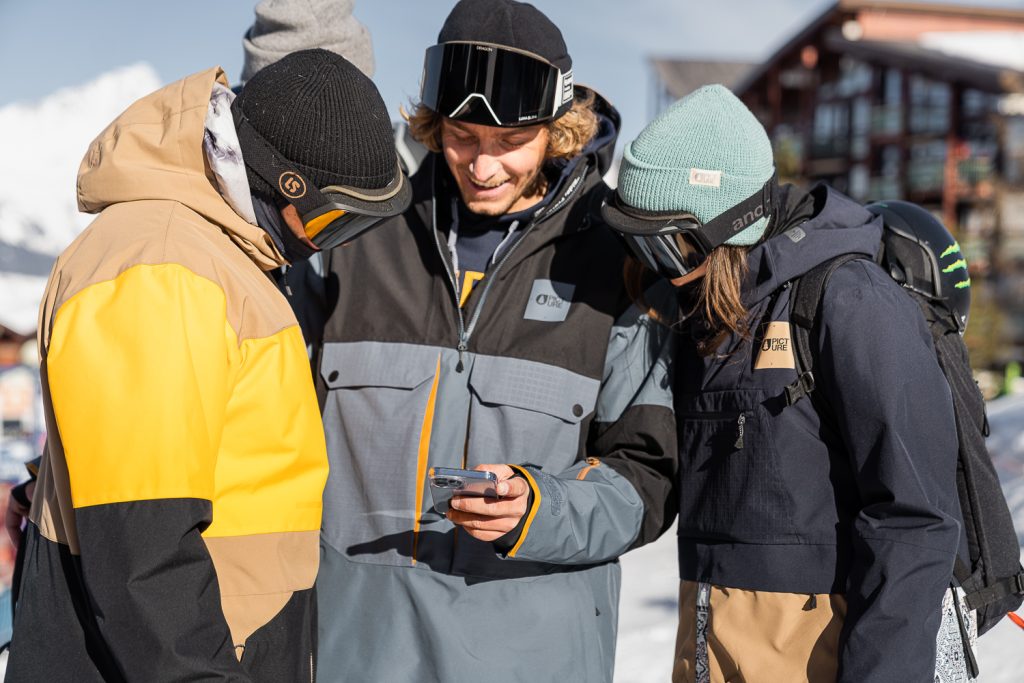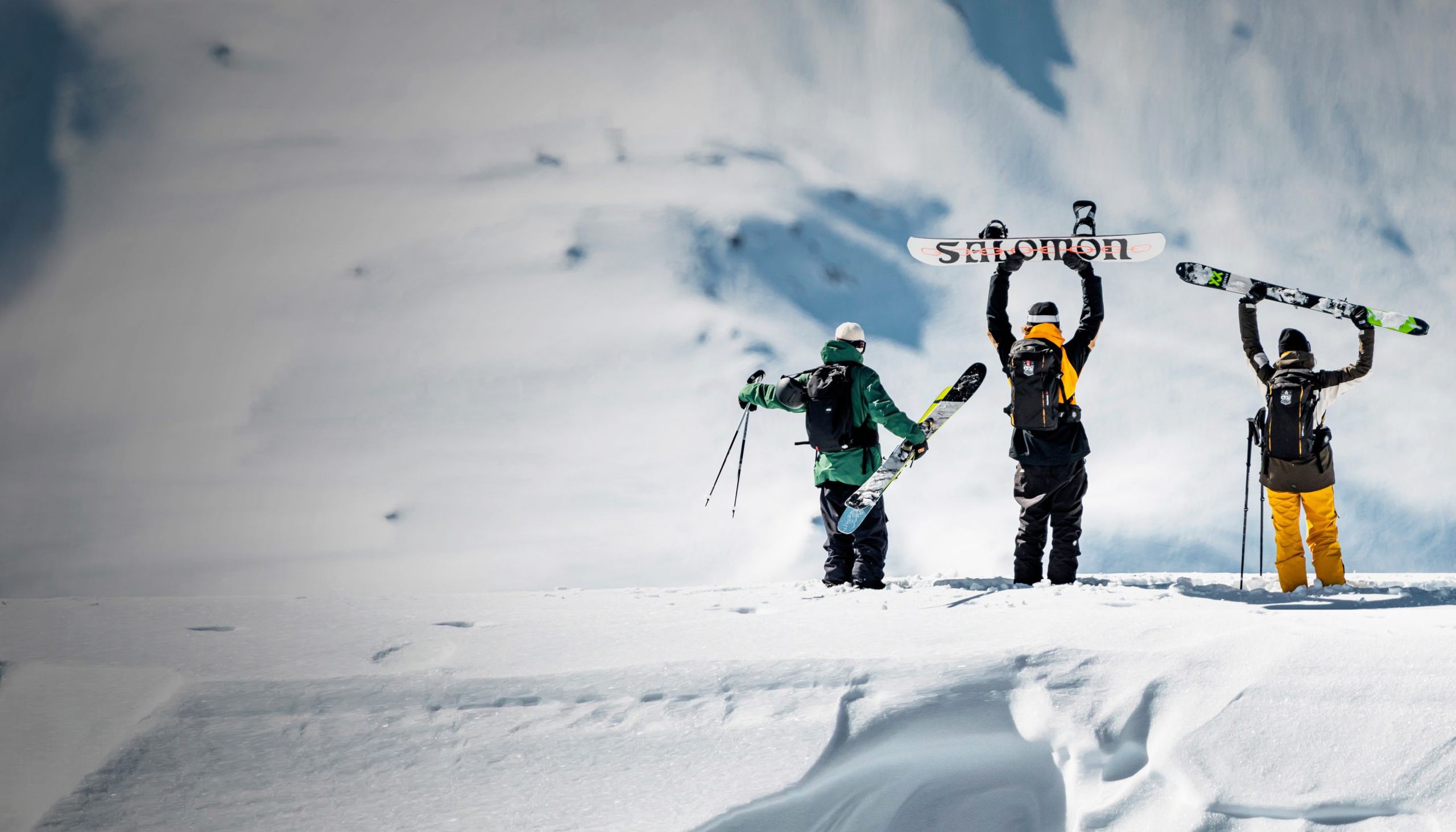Is renting part of the package for a « less but better » consumption? Yes, we think so! Our clothes will be used many times, for many adventures, and for even longer.
This way if you want to rent your first Picture products!
Here is the context:
Aubin, a cool, minimalist Swede, is going shopping in the year 2000. He buys 8 items from a variety of hip brands. It weighs out at about 3 kg, which is the annual average amount of clothing a Swede buys in 2000. He wears and keeps 7 of those items; 1 shirt he throws out.
We’re now in 2019. Aubin’s son, another cool, minimalist Swede, is going shopping several times a year. He buys 35 items from a variety of hip brands. It weighs out at about 14 kg, which is the annual average amount of clothing a Swede buys in 2019. He wears and keeps 15 of those items, the other 20 items he doesn’t use by throwing them out, donating them to a local charity, or letting them sit in his closet until they become on trend again.
The latter is our current fashion model. There’s high consumption for little usage. We buy to wear once, or let it sit in our closets, or toss it in order to get the new collection. Fast fashion, on average, puts out a new collection every 6 weeks. Despite how fashionable we all may look, there are serious issues with this.
Our main motivation as a committed textile brand is to make this industry less polluting and more sustainable. There are multiple points of improvement, but 3 themes clearly stand out:
- Produce less, consume less
- Transitioning out of coal and gas electricity for the spinning, weaving, and dyeing stages
- Getting away from oil-based materials
To have a vision on how to achieve these improvements in the textile industry, To have a more global vision of the many regulatory levers to activate to transform this industry, we strongly advise you to explore the claims of the En Mode Climat movement, where Picture is an active member. They lay out particular regulatory levers that will encourage these improvements. In this general framework, we believe that rental has a role to play, as a lever to reduce impact, and as a real business model.

Now it’s time to talk about rental!
Our rental service will allow people to rent our technical products (for skiing, snowboarding, surfing) for whatever their needs. The program’s purpose is twofold: one, to get multiple uses out of our products and two, give an affordable option to those who want to get out on the snow.
Mountain activities, especially winter sports, can be expensive. If someone goes on ski holiday once this year, they have to cost together accommodations, travel, passes, food, apres-ski budget. It adds up. Then, to purchase one outfit for one time, can be unreasonable and make our passion sports inaccessible to many.
This way for a very complete (hopefully) FAQ.
Affordability is not the only reason to why we are launching a rental program. We think it’s potentially a way to lower our environmental footprint and influence the industry to look into different models of “slowing the loop”.

Source: Fashion For Good, 2019, modified by Picture for points 4 and 5.
But… is it good for the environment?
To be honest, we don’t know. Everyday fashion rental is a relatively new area; academic studies and experiences of other brands have reached various conclusions. We have heard:
“Although a decrease in garment production is beneficial, the associated transport needed to facilitate one garment rental creates a high impact that could reduce the PSS’s (rental) potential for environmental impact savings.”
(Johnson & Plepys, 2021)
“Rental could play a critical role in shifting the industry towards a less resource intensive model, through incentivising higher production standards and greater garment longevity. Purchase displacement rate must be considered as a key metric when assessing potential environmental benefits.”
(Fashion for Good, 2019)
“The environmental savings potential that a PSS (rental) can have is influenced heavily by how consumers choose to engage with rental BMs (business models). This is shown in how many times consumers use garments, how they use rental to substitute or complement their purchasing or use needs, and how they choose to travel to rental store locations.”
(Johnson & Plepys, 2021)
There’s a fair amount of if’s, and’s, and but’s when it comes to the environmental impact of rental. These variables have been taken into consideration during the launch of our rental program, causing some fierce (and nerdy) debates about effective climate action in the fashion industry.
Yet we see potential in a rental service.
Why? The math:

Of course, this is a bit of a caricature. But we want to highlight the point that, ultimately, renting could reduce the textile industry’s volume of production.
UPDATE! Check out our environmental analysis Renting VS Buying.
Also, it has been said that “Wearing a garment twice as long would lower greenhouse gas emissions from clothing by 44%.” (Bedat, 2021).
There’re 3 positives that we see with rental:
1. This can become a way to decrease production volumes over the years, especially specific-use products that you don’t need often, like snow pants and technical jackets. This means less energy used to manufacture the products, and therefore fewer emissions.
2. Another way to interact with you: our customers, our community, our fellow riders. The more we engage and talk about things related to climate change, especially potential solutions (on a small scale, fully recognizing that rental is another drop in the bucket), the more we can act together.
3. Exploring something new. It’s in Picture’s blood to turn away from the traditional way, to innovate, to sought new experiences.
Lastly, at Picture, we always try to see the big picture. Rental is a step to diversifying our business. It’s a step towards more recirculation programs. It’s a step towards achieving our mission.
Stay tuned!
References:
Johnson & Plepys (2021). Product-Service Systems and Sustainability: Analysing the Environmental Impacts of Rental Clothing. Sustainability 13.
Fashion for Good & Accenture Strategy (2019). The Future of Circular Fashion: Assessing the Viability of Circular Business Models.
Beall, A. (2020). Why clothes are so hard to recycle. BBC.
Bedat, M. (2021). See the horrifying place where your old clothes do to die. Fast Company.
Changing Markets Foundation (2021). Fossil Fashion.
Towards sustainable business models with a novel life cycle assessment method
